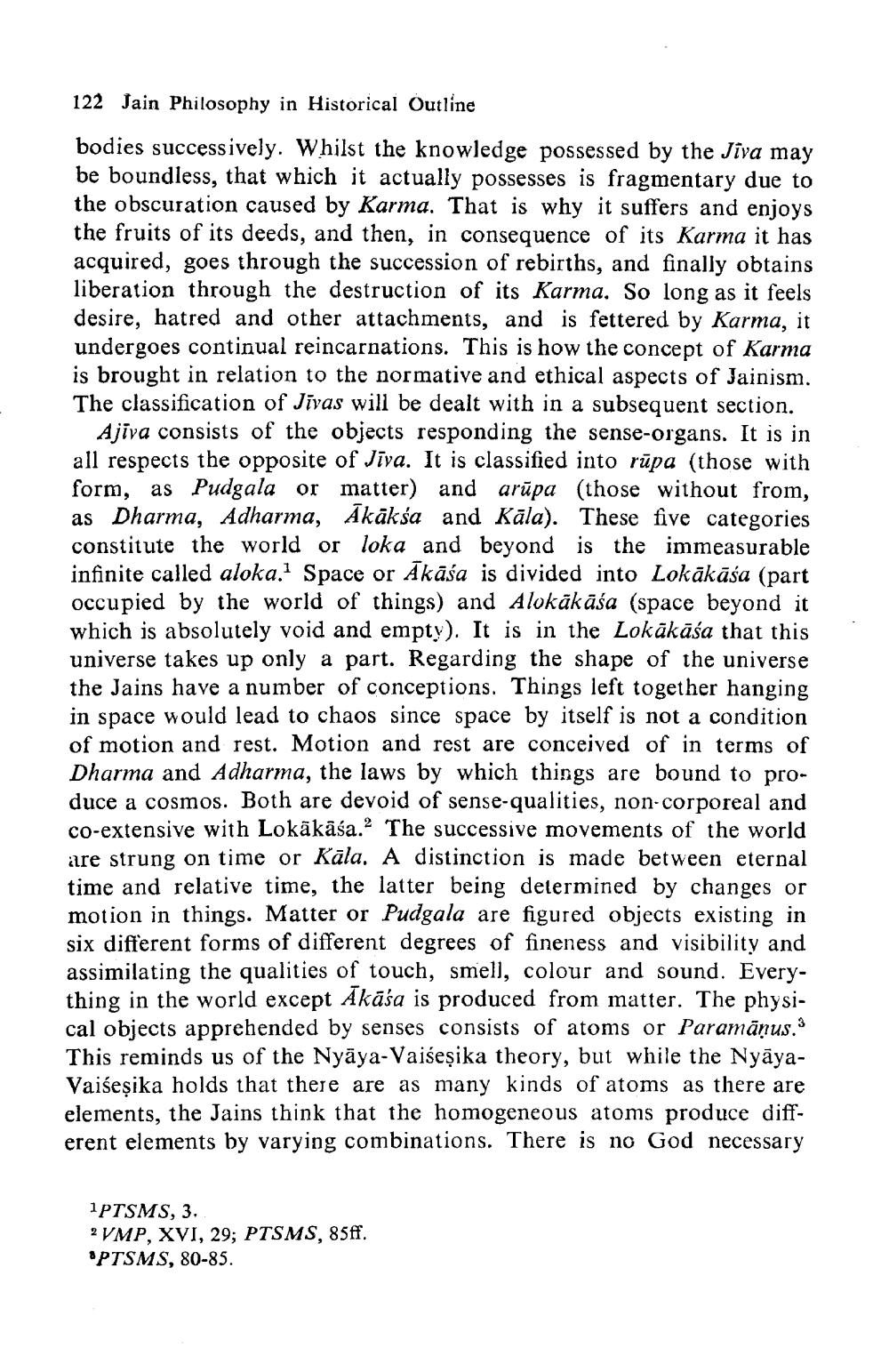________________
122 Jain Philosophy in Historical Outline
bodies successively. Whilst the knowledge possessed by the Jiva may be boundless, that which it actually possesses is fragmentary due to the obscuration caused by Karma. That is why it suffers and enjoys the fruits of its deeds, and then, in consequence of its Karma it has acquired, goes through the succession of rebirths, and finally obtains
beration through the destruction of its Karma. So long as it feels desire, hatred and other attachments, and is fettered by Karma, it undergoes continual reincarnations. This is how the concept of Karma is brought in relation to the normative and ethical aspects of Jainism The classification of Jivas will be dealt with in a subsequent section.
Ajiva consists of the objects responding the sense-organs. It is in all respects the opposite of Jīva. It is classified into rūpa (those with form, as Pudgala or matter) and arūpa (those without from, as Dharma, Adharma, Akakša and Kāla). These five categories constitute the world or loka and beyond is the immeasurable infinite called aloka. Space or Ākāśa is divided into Lokākāśa (part occupied by the world of things) and Alokākāśa (space beyond it which is absolutely void and empty). It is in the Lokākāśa that this universe takes up only a part. Regarding the shape of the universe the Jains have a number of conceptions. Things left together hanging in space would lead to chaos since space by itself is not a condition of motion and rest. Motion and rest are conceived of in terms of Dharma and Adharma, the laws by which things are bound to produce a cosmos. Both are devoid of sense-qualities, non-corporeal and co-extensive with Lokākāśa.? The successive movements of the world are strung on time or Kāla. A distinction is made between eternal time and relative time, the latter being determined by changes or motion in things. Matter or Pudgala are figured objects existing in six different forms of different degrees of fineness and visibility and assimilating the qualities of touch, smell, colour and sound. Everything in the world except Akāśa is produced from matter. The physical objects apprehended by senses consists of atoms or Paramānus. 3 This reminds us of the Nyāya-Vaišeșika theory, but while the NyāyaVaišeșika holds that there are as many kinds of atoms as there are elements, the Jains think that the homogeneous atoms produce different elements by varying combinations. There is no God necessary
IPTSMS, 3. 2 VMP, XVI, 29; PTSMS, 85ff. *PTSMS, 80-85.




